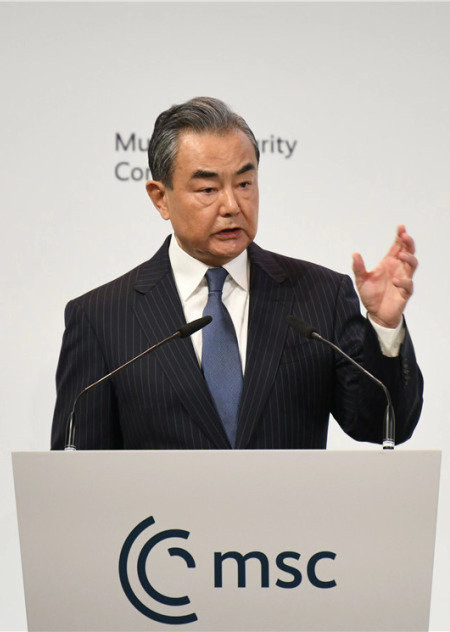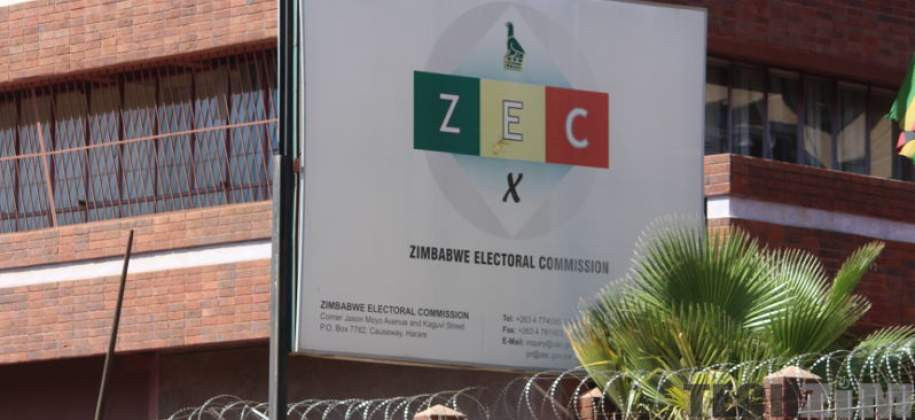
“On February 17, China's Foreign Minister Wang Yi who was attending the Munich Security Conference in Germany, made a number of important remarks regarding the Xinjiang issue, which are very important in debunking Western lies and fallacies around the Xinjiang question and the condition of the Uighur populace in China…”The Xinjiang issue refers to a contrived narrative by Western media media and some politicians who constantly churn out reports alleging that the Chinese Uighur (also spelt Uyghur) people, a minority ethnic group of Turkic-Muslim identity, are being mistreated, suppressed, "internally colonised" and on the brink of ethnic and cultural destruction. This misleading narrative claims that the Uighur require liberation and Western-style democracy and human rights, apparently denied them by the Chinese government under the Communist Party of China (CPC). This is a claim that Chinese authorities reject vehemently and China accuses Western media and political interests as bent on smearing China's image and deceive the international community on the true developments in Xinjiang.Unsurprisingly, the issue has been elevated to a global flashpoint and there is need to unpack what the issues are and how the issue should be understood, given its complexities.We have established, however, that Zimbabwe through the ruling Zanu-PF party and Government has expressed support for China’s policy on not just Xinjiang, but also its handling of ethnic and regional issues, including questions on Taiwan, Hong Kong and Tibet; which Western countries seek to exploit and inflame so as to break up and weaken China and derail its dream of national unity and rejuvenation, set to be achieved in this century.In this installment we explore critical dynamics and developments of how the Xinjiang issue has been handled by authorities including government programmes on re-education, anti-terrorism and deradicalization. At the same time, we illustrate how Xinjiang is recording socio-economic progress, which puts to shame malicious reports and falsehoods peddled by the West.Debunking liesRecently, on February 17, China’s Foreign Minister Wang Yi who was attending the Munich Security Conference in Germany, made a number of important remarks regarding the Xinjiang issue, which are very important in debunking Western lies and fallacies around the Xinjiang question and the condition of the Uighur populace in China. Wang's clarifications are important in that they give us a clear and present picture of the Chinese State's policy on Xinjiang and how the region is progressing in accordance to human development indices. The formation of China's ultra-large market will also provide new development opportunities for all countries and help the world achieve common development and prosperity but this is being jeopardised by detractors in the West who seek to undermine China's right to development and economic progress. Wang dispelled the notion of the so-called “genocide" or ethnic cleansing in Xinjiang and explained that since the establishment of the Xinjiang Uighur Autonomous Region in 1955, the Uighur population has grown from 3 million to more than 12 million to date. The average life expectancy of people of all ethnic groups in Xinjiang has increased from 30 years to 75.6 years. This means that the region and its people are part of China's march toward modernization of 1.4 billion people, itself a huge progress for human civilization, according to Wang. The Chinese modernisation drive is tied to China's economic development, which will see it becomes the largest global economy less than two decades from now. Those that peddle false and divisive narratives of Xinjiang and China seek to disrupt economic progress, specifically by seeking to exclude some of China's goods from global value chains by claiming that products from Xinjiang are a result of forced labour. Wang clarified this point and explained that allegations of forced labour were meant to take the jobs away from the Uighur people and make their products unsellable on moral grounds.Wang also debunked another false narrative about lack of religious freedom, explaining that the freedom of religious belief of all ethnic groups there has been well protected, citing examples that Muslims enjoy enough religious sites and the government has funded the repair and maintenance of mosques. Government documents and store signs are bilingual and the languages and cultures of various ethnic minorities, including the Uighurs, have been protected and passed on, Wang explained. Interestingly, a careful reading of Chinese religion and culture demonstrates that cultural and religious diversity has long been practiced in Xinjiang, including Buddhism, Zoroastrianism and Taosism. An authoritative document reveals that Xinjiang now has multiple religions, including Islam, Buddhism, Taoism, Protestantism, Catholicism, and the Eastern Orthodox Church. It has 24,800 venues for religious activities, including mosques, churches, Buddhist and Taoist temples, with 29,300 religious staff. Among these, there are 24,400 mosques, 59 Buddhist temples, 1 Taoist temple, 227 Protestant churches (or meeting grounds), 26 Catholic churches (or meeting grounds), and 3 Orthodox churches (or meeting grounds). Muslim religion has neither been the exclusive religion of the region throughout history to the present. Those that seeks to elevate it do so for the purpose of inflaming religious tensions and weaponising Islam with intent to instigate the Muslim world against China. It also is meant to foment religious fundamentalism and terror attacks on China, something that is very cynical and hypocritical of Western countries. Positive developments and policiesThe Chinese government has initiated a number of positive policies and pro-development directions that ensure the prosperity of the region and its people, as part of greater Chinese success. One way to understand what China has been doing is to appreciate that as the State with overall control of its territory, China makes recognises peace, security and development as fundamental, just like any other responsible jurisdiction. (Xinjiang is an autonomous region of China, with its administrative capital at Urumqi.)Using this as analytical lenses, one has to further holistically look at the overall social, economic and political matrices and structures to understand both the general and specific contexts of issues that have been raised about Xinjiang. Over the years, the Chinese government has clarified that the region is facing threats to peace and security which could destabilise the whole country and derail progress. The threats comes mostly from separatist forces and movements who seek a breakaway of the region so that it becomes the so-called East-Turkistan state, which China has vehemently dispelled. Until the Government addressed the peace and security issue, there were numerous incidents of terrorism in Xinjiang, and China has set up measures to combat terrorism through education and de-radicalisation.One of the positive drives by the Chinese government has been employment creation. In a white paper, authorities state that: “In accordance with the country's major policies on employment and the overall plan for eliminating poverty, the Xinjiang Uygur autonomous region takes the facilitation of employment as the most fundamental project for ensuring and improving people's well-being. It has made every effort to increase and stabilize employment through various channels: encouraging individual initiative, regulatory role of the market, and government policies facilitating employment, entrepreneurship, and business start-ups.”The scale of employment has expanded continuously, according to information available. From 2014 to 2019, the total number of people employed in Xinjiang rose from 11.35 million to 13.3 million, an increase of 17.2 percent. The average annual increase in urban employment was more than 471,200 people (148,000 in southern Xinjiang, accounting for 31.4 percent); and the average annual relocation of surplus rural labor was more than 2.76 million people, of whom nearly 1.68 million, or over 60 percent, were in southern Xinjiang.It is also reported that the quality of the workforce in Xinjiang has improved significantly, thanks to the government's education projects, enrollments in preschool education, nine-year compulsory education, senior high school education, higher education and vocational education in Xinjiang have all reached the highest level in history resulting millions of young people acquiring at least one skill with employment potential, and the vast majority of them obtained vocational qualifications, skill level certificates, or specialized skill certificates, allowing them to go on to find stable employment.Some key features of this positive trajectory include: increase of residents and workers incomes, upgrading of the industrial structure to increase employment, assistance of key groups to obtain stable employment, encouragement innovation and entrepreneurship to generate employment, vocational training to facilitate employment, creation of employment information platforms and prevention and punishing any incidents of forced labour.The workers of Xinjiang are guaranteed human and labour rights, that include Guaranteeing workers' equal right to employment, right to rest and leisure and to occupational safety, right to participate in social insurance, freedom of religious belief and the right to use their own spoken and written languages, rights and interests and strengthening the relief mechanism, among others.Last wordChina is a vast developing country of over 1,4 billion people. The problems in Xinjiang, a formerly under-developed region in the North West which is home to an ethnic minority group of Uighur people are not particularly unique to China. The problems such as poverty and underdevelopment are being addressed as part of China’s greater progress based on national unity and development, but also to forestall destabilisation of the region as the situation could be exploited by internal and external forces: some internal forces have been seeking separatism, while external forces such as Western countries have sought to exploit problems and conditions in Xinjiang to build a case for confrontation between the citizens and central Government, particularly inflaming ethnic and religious sensitivities. Western media have misrepresented the situation in Xinjiang, including China’s efforts to bring development, integrate people, deradicalise and prevent terrorism. It is fundamental to understand that the West seeks to encourage and fan division and instability in China, in the hope that China’s progress as a global power - now the world’s second largest economy set to overtake America by 2050 - is derailed. Western countries are also afraid of China’s growing strength, which will be consolidated further by the unification and rejuvenation of the Chinese nation which is set to be achieved in this century.











